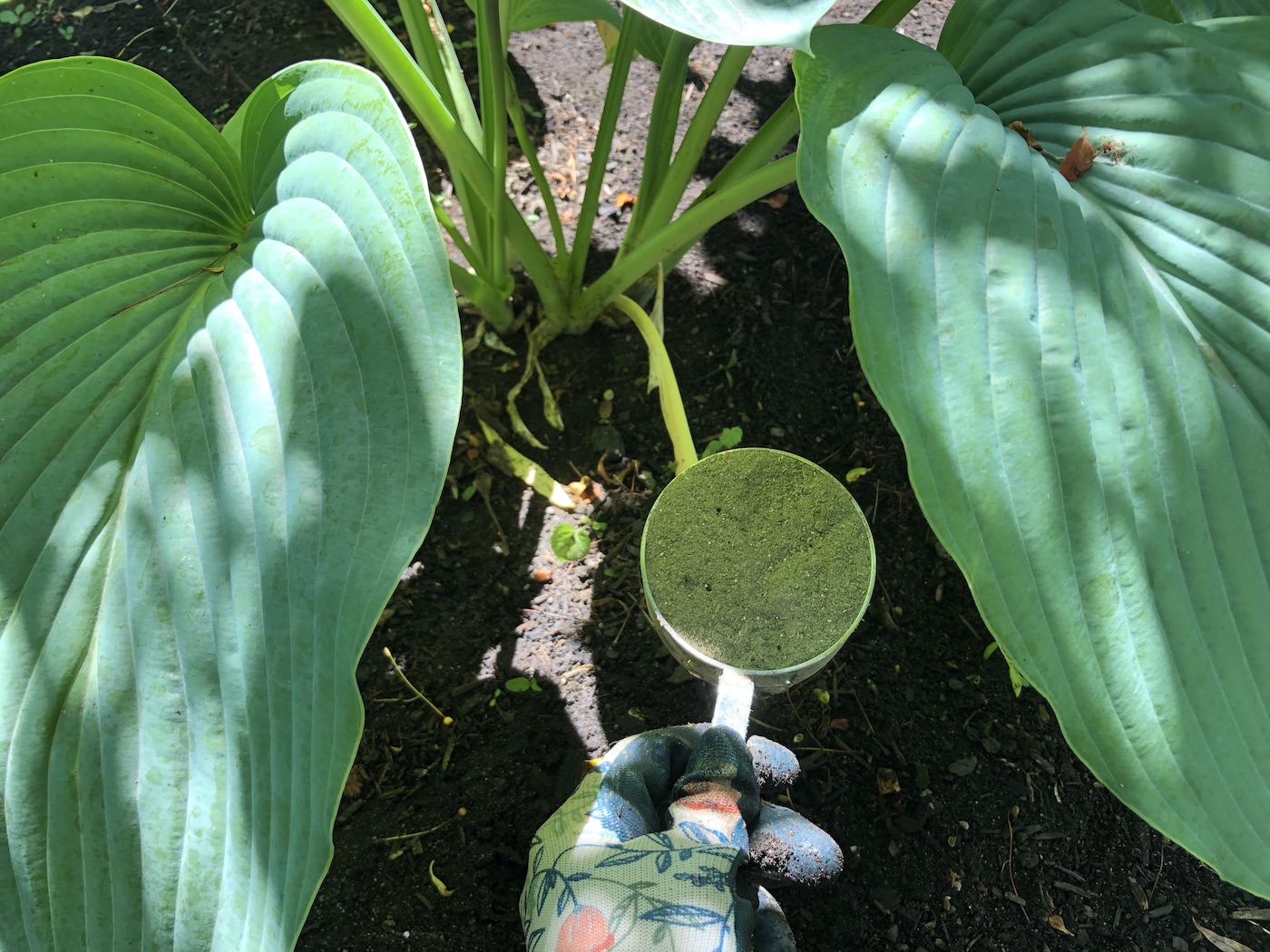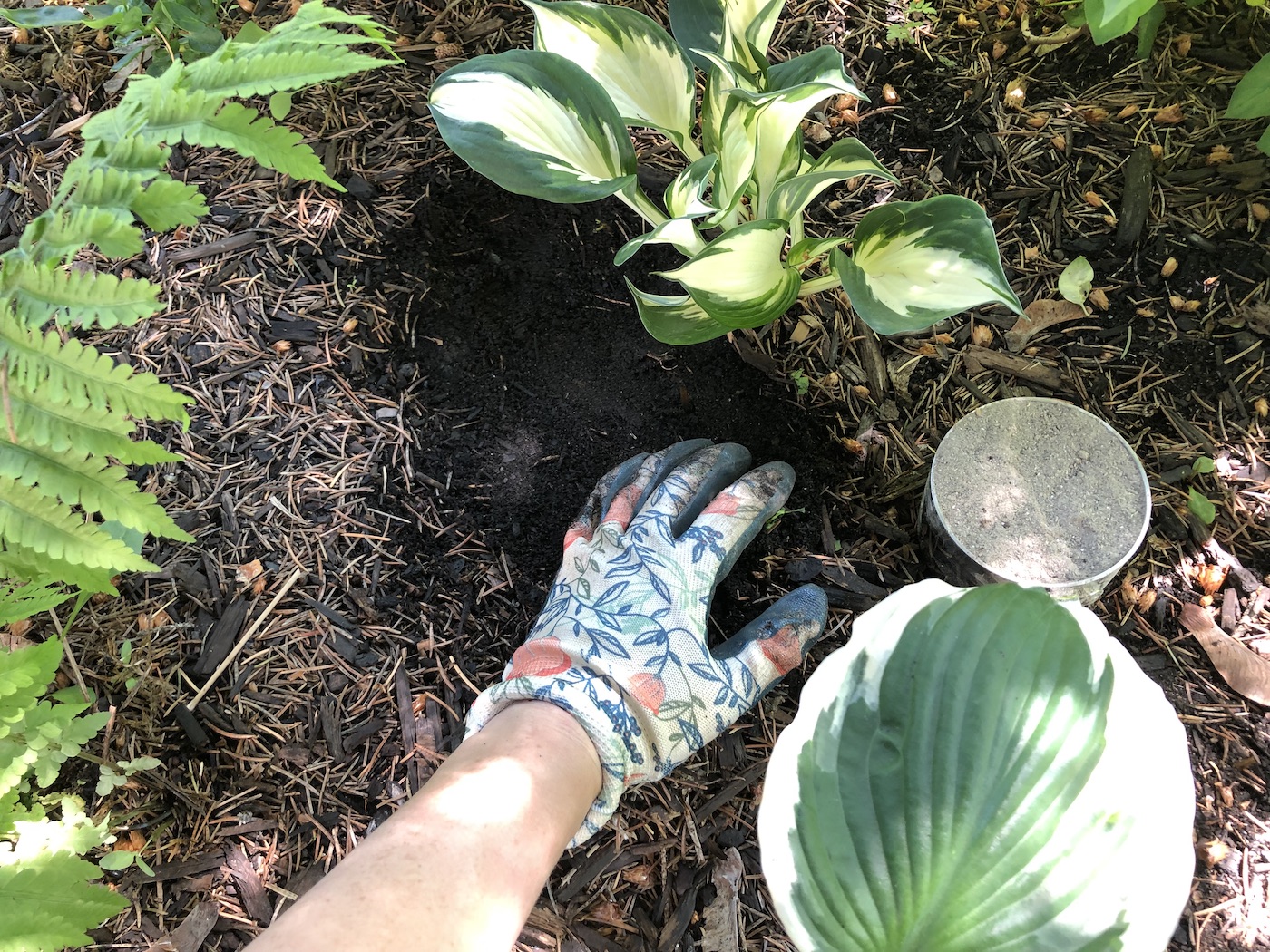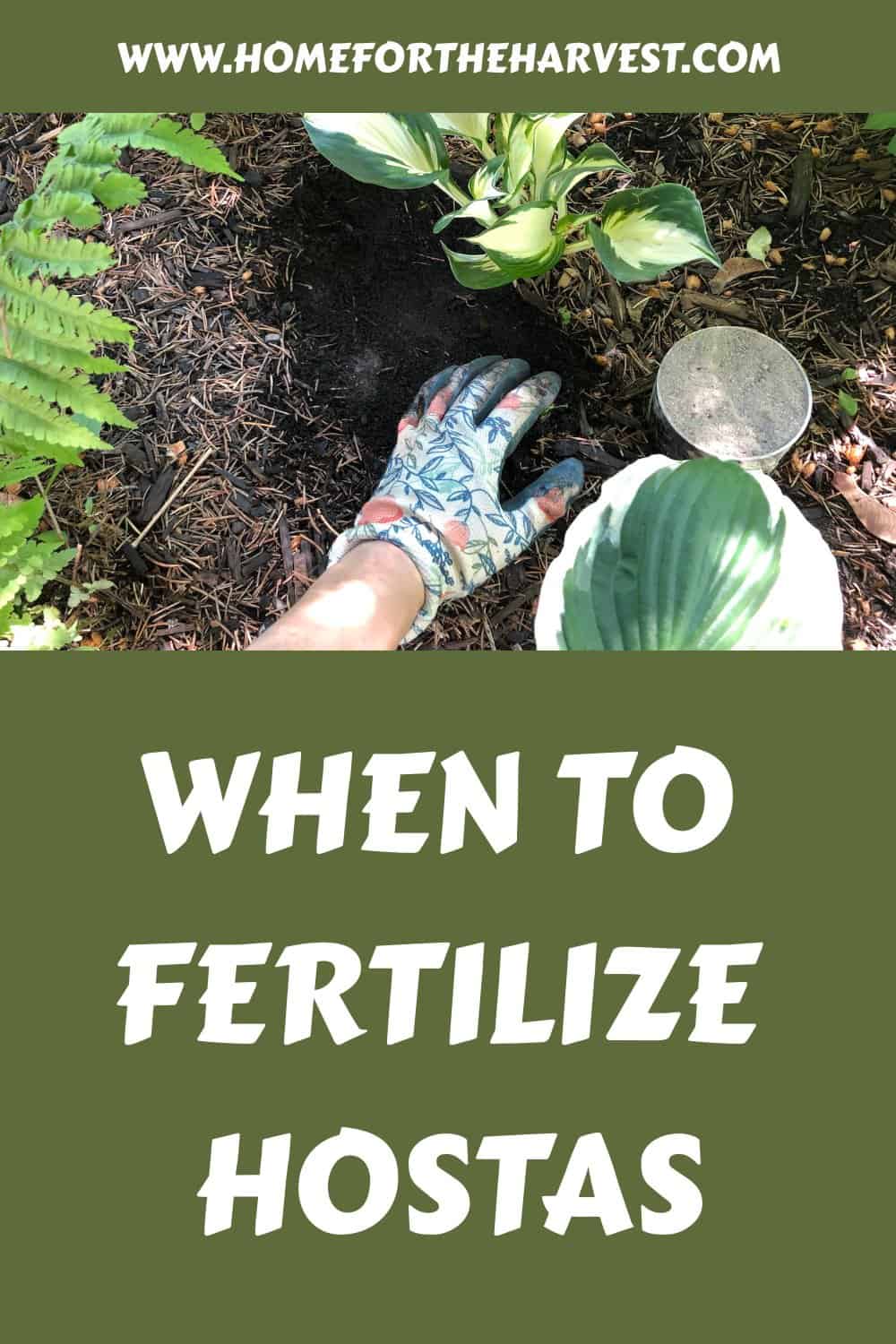The best time to fertilize hostas is in the spring. A slow-release granular fertilizer can be applied to the soil surface in early spring after the soil has thawed and the hostas are starting to sprout.
Most slow-release hosta fertilizers can be applied every month or two in the springtime through until midsummer. You can also apply foliar fertilizers every week for extra-special plants.
Stop fertilizing your hostas in late summer and fall. That said, a thin layer of organic mulch can be applied at any time of year.
Fertilizing hostas in early spring
Fertilizing hosta plants starts in early spring. This is typically in March or April, depending upon the local climate. You can fertilize your hostas any time in early spring as long as the ground is not frozen.
Apply a granular slow-release fertilizer around the base of the plant. Try not to get the fertilizer on the sprouts, but if you do, just wash them off with water. Either way, you’ll have to water the fertilizer in after sprinkling it on the soil. You may also wish to top up the mulch in the perennial garden at this time of year.
While the instructions for products differ, most use about a cup of organic fertilizer for each square foot of area covered by the hostas leaves (when the hosta is fully leafed out). Hostas are generally over a foot wide, although there are a few tiny hosta types that will require less than this quantity. If your hosta measures more than 3 feet across, then use 2 cups of fertilizer around the base of the plant.
Spring is also a fantastic time to plant new hostas. If planting new hostas in the spring, you can mix a starter fertilizer into the soil prior to planting.
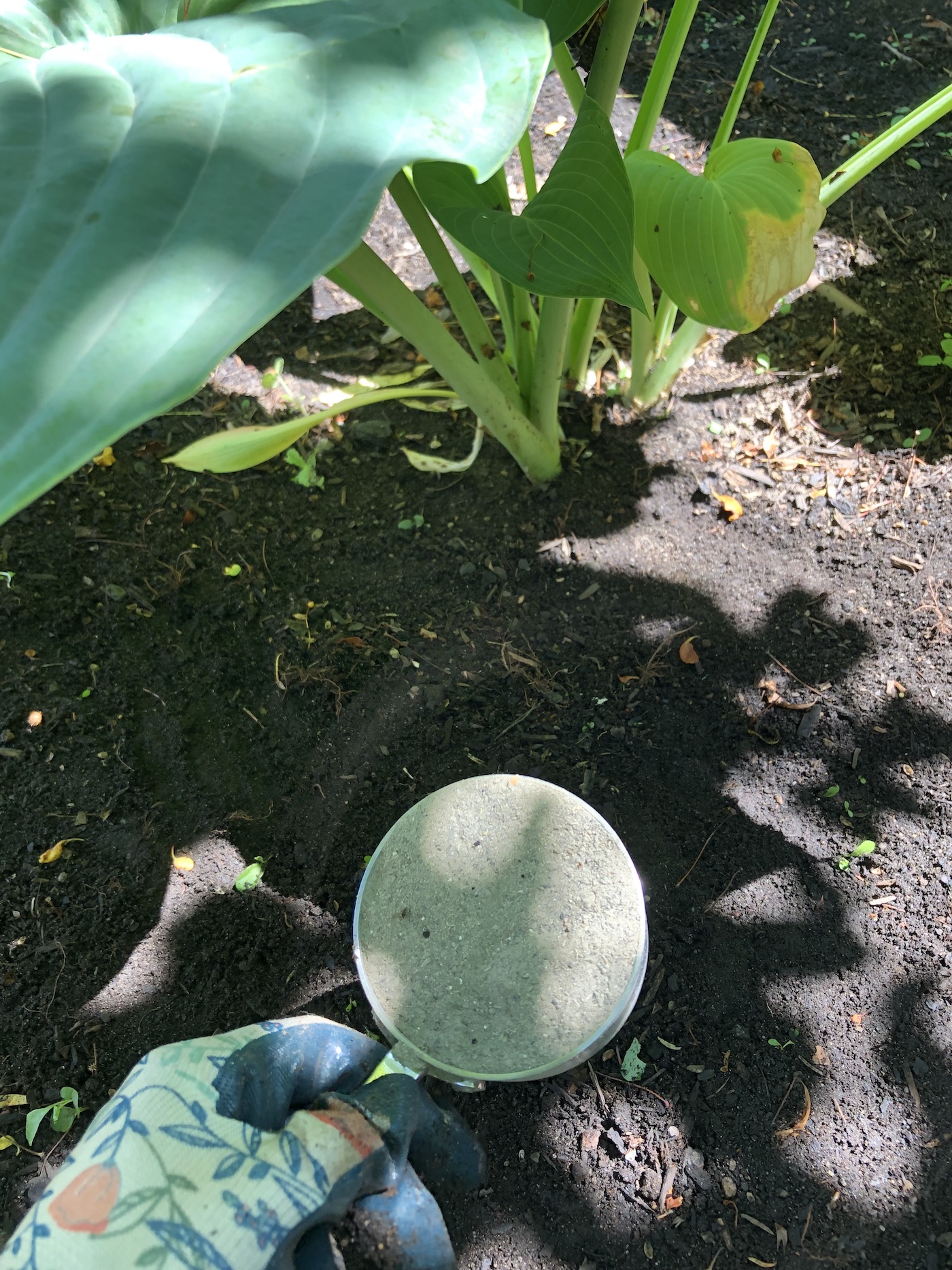
Fertilizing hostas in late spring and early summer
Once the hostas have leafed out in late spring (typically in May or June), most organic slow-release fertilizers can be reapplied. Granular fertilizer is frequently applied around the hosta’s drip line (read more about how to fertilize hostas).
Because the roots are broader than the leaves, granular fertilizer may be applied in a wide circle around the plant’s base, extending just beyond the leaves. Fertilizer should not be applied to the aboveground stems of the leaves. Just sprinkle it on the soil around the plant, over the top of its roots.
You can also start feeding your hostas with a foliar spray fertilizer once the leaves start to unfurl in the spring. These products are generally high in nitrogen and magnesium and are sprayed on the leaves. Some items are available ready to use in a spray bottle, while others are diluted in your own bottle or larger sprayer.
Foliar spray fertilizers should be applied in the early morning or in the evening once the sun is down. Most organic foliar sprays can be applied every week if so desired. Be sure to read and follow the application instructions on your chosen product.
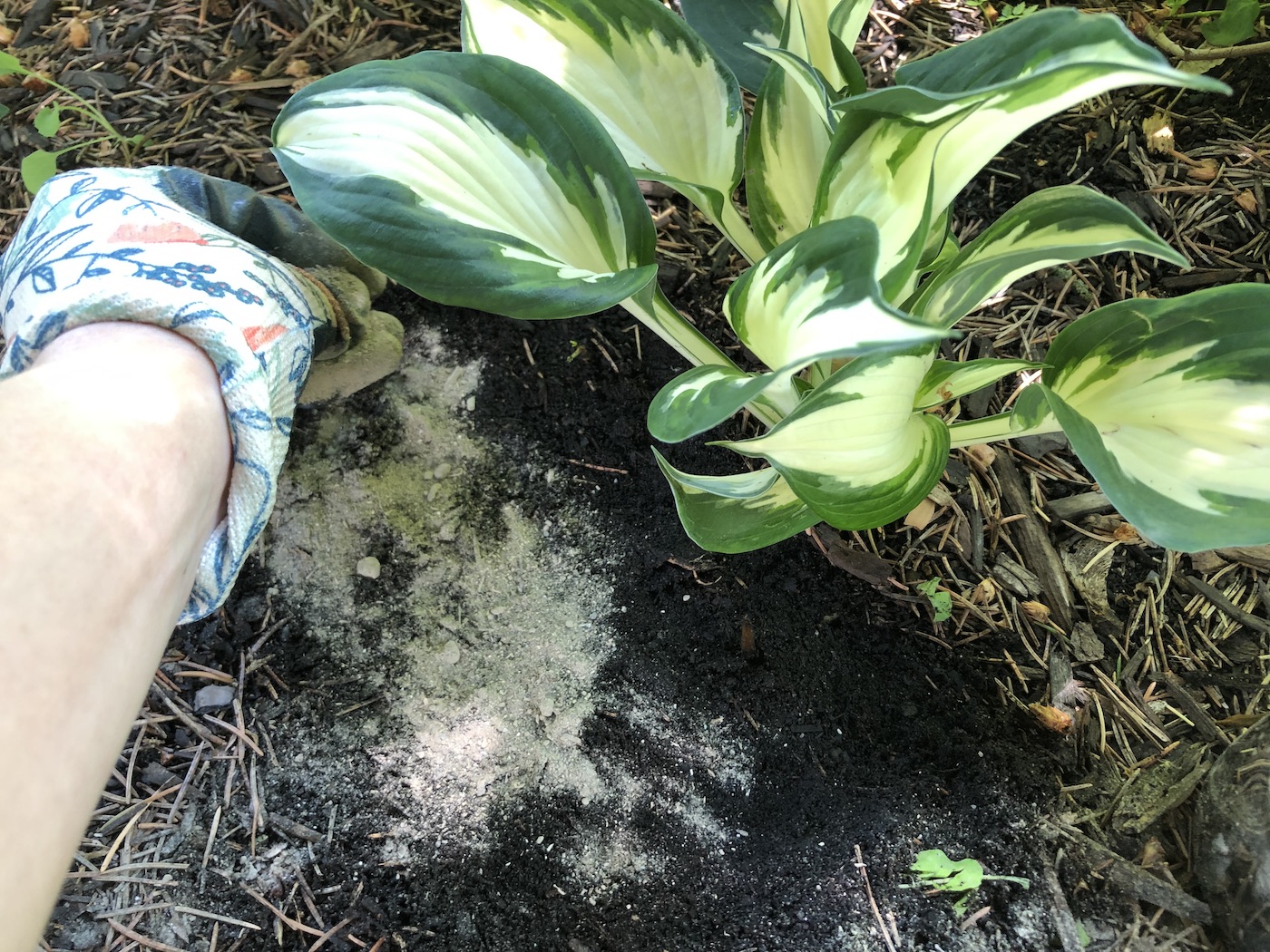
Stop fertilizing hostas in late summer
By late summer, you’ll want to stop fertilizing your hostas. This is because the plant will be preparing for winter and won’t need the extra nutrients.
Feeding in late summer can cause floppy tender growth that is susceptible to late-season slug damage. Let it rest! Enjoy any remaining flowers in the garden and take some time off from feeding your hostas!
Avoid fertilizing hostas in fall or winter
Fall and winter are seasons of relative dormancy. The plant should be allowed to rest rather than being fed during these months. Never apply fertilizer if the ground is still frozen (even if you’re sure the air temperature qualifies as “early spring”).
While fertilizing isn’t on the table in fall or winter, you can certainly mulch your plants as part of your autumn yard clean-up. Mulching your hostas with organic material helps to keep the roots cool and wet during the summer, as well as weeds. It also delivers a steady supply of nutrients to your plants over time. This is the only fertilizer that should be used in the fall, as it’s usually relatively mild.
Good mulches for hostas include shredded bark, compost, cocoa shells, coconut coir, pine needles, or hardwood chips. Mulch protects hostas from extremes of heat and wetness, and it aids in the retention of moisture in the soil. Keep mulch away from the base of the hosta’s stems to lessen the chances of disease.
